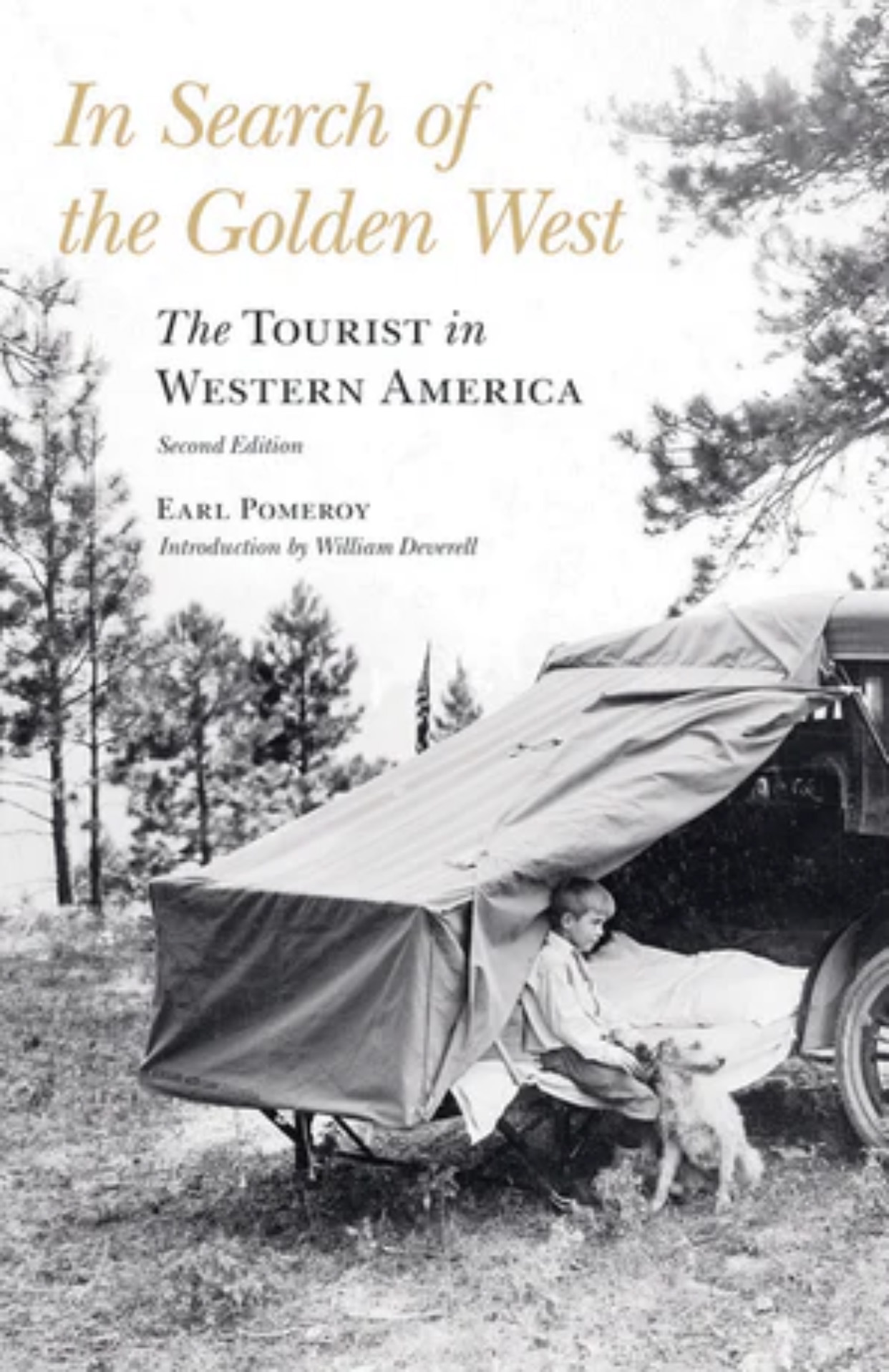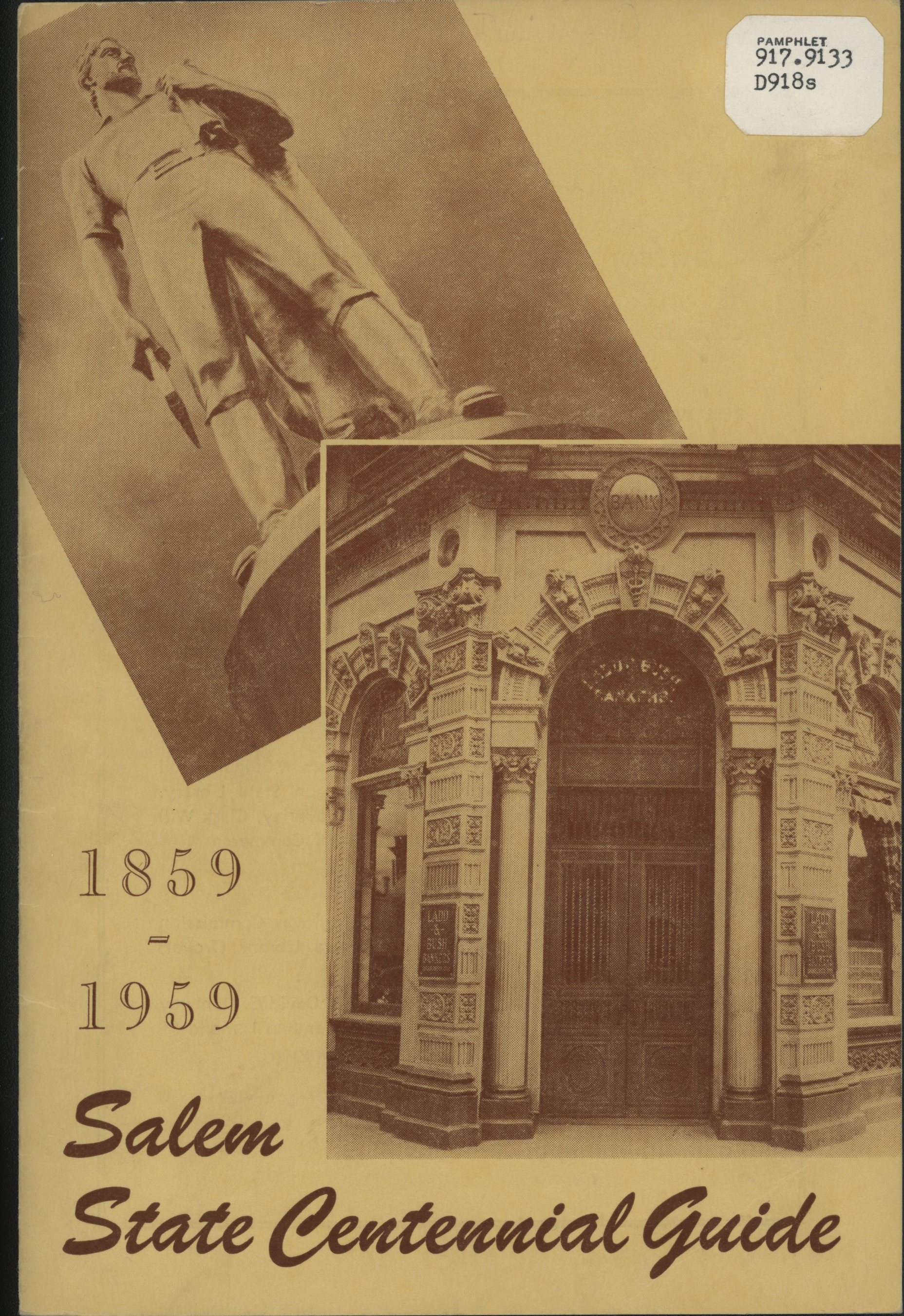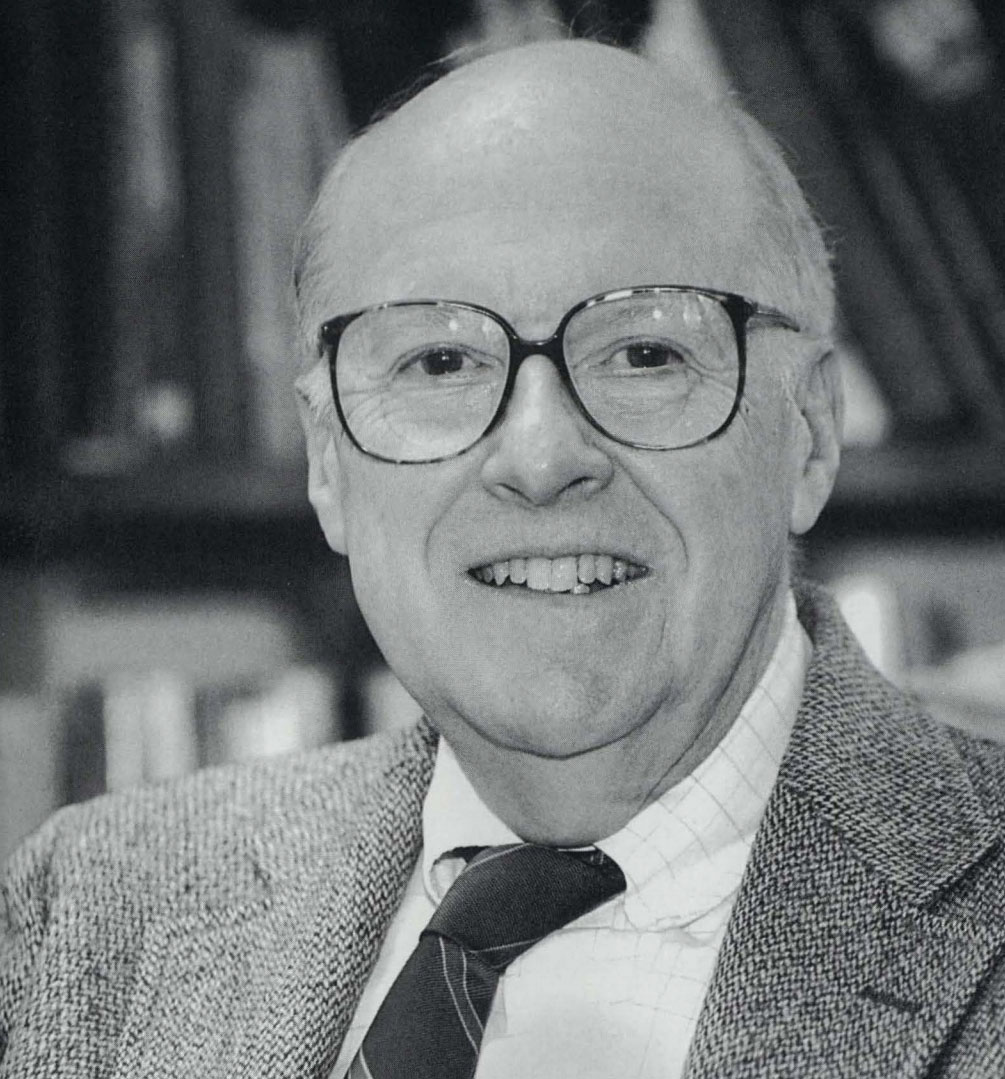Western historian Earl Pomeroy was a longtime professor at the University of Oregon and a major figure in historical writing. In the mid-1950s, he advanced a revisionary thesis that, if followed, would have changed the way scholars wrote about the American West. In writings of his own, he followed his East-to-West continuity thesis in integrating and expanding the meaning of the American West.
A fifth-generation Californian, Pomeroy was born in Capitola on December 27, 1915. After public schooling in California, he graduated with a B.A. from San Jose State College. He completed his doctorate in history in 1940 at the University of California, Berkeley, where he studied with frontier historian Frederic Logan Paxson. After brief teaching assignments at the University of Wisconsin, the University of North Carolina, and Ohio State University, he joined the faculty of the University of Oregon in 1949, where he remained until 1976. He finished his career at the University of California, San Diego, and retired in 1984.
Pomeroy’s first book, The Territories and the United States, 1861–1890 (1947), which won the Albert Beveridge Award from the American Historical Association, became the most-cited source for studies of American territories. His pioneering work in the cross-continental connections between the American West and the federal government led historian Howard R. Lamar to label him the father of the "federal school." His second book, Pacific Outpost: American Strategy in Guam and Micronesia (1951), extended his thinking on central government policies dealing with new territories.
The most influential of Pomeroy's articles is "Toward a Reorientation of Western History: Continuity and Environment" (1955), which advanced his continuity thesis in two ways. First, he believed that many historians of the frontier, including Frederick Jackson Turner, had placed too much emphasis on the human and natural environments pioneers faced in the American West and had overlooked the continuities of economic, social, legal, and cultural influences from the East flowing into the West. Second, nearly all western historians had ended their histories in the 1890s rather than moving forward into the twentieth century to show those continuities.
Pomeroy moved to a new field in his third book, In Search of the Golden West: The Tourist in Western America (1957). In his desire to see the American West whole, Pomeroy sought to uncover images and ideas that tourists fostered to see if their views paralleled what factual studies revealed. That project was prologue to his fourth and most widely read book, The Pacific Slope: A History of California, Oregon, Washington, Idaho, Utah, and Nevada (1965). The provocative volume employed Pomeroy's two continuity theses to furnish a general history of the Far West from its beginnings to the early 1960s. He emphasized cities and urban culture, reminding readers that the West had become increasingly urban and less like the wide-open spaces of the frontier.
Pomeroy's final book, The American Far West in the Twentieth Century (2008), was a product of more than thirty years of research and writing and remains the most thorough study of the modern American West. The book includes Pomeroy's thorough work on economic, social, and political subjects, but also more wide-reaching discussions of the important roles of women and multicultural racial and ethnic groups in the modern West.
Pomeroy won several awards and fellowships, including Guggenheim Fellowships in 1956 and 1971 and an NEH Fellowship in 1968. He was president of the Pacific Coast Branch of the American Historical Association in 1970–1971 and president of the Western History Association in 1993–1994.
Pomeroy was especially strong as a teacher in upper division and graduate courses, where he delivered thoughtful and analytical lectures. Those who studied with him remember his direction in their writing. When he rewrote a student's sentences, for example, he placed a question mark at the end, suggesting but not demanding that the student accept his revisions.
After Earl Pomeroy died in Eugene on January 18, 2005, historian William Cronon summed up his large legacy in this salute to his final book: "No historian of the past half century has written about the American West with greater insight and originality than Earl Pomeroy. We are lucky indeed that he has left us this posthumous volume as a final monument to the depth and range of his extraordinary scholarship."
-
![]()
Earl Pomeroy.
John Simon Guggenheim Memorial Foundation -
![]()
In Search of the Golden West, by Earl Pomeroy.
Courtesy Bison Books, Nebraska
Related Entries
-
![David C. Duniway (1912-1993)]()
David C. Duniway (1912-1993)
David C. Duniway was the first Oregon State Archivist and a champion fo…
-
![Dorothy Olga Johansen (1904-1999)]()
Dorothy Olga Johansen (1904-1999)
Dorothy Olga Johansen was a prominent Pacific Northwest historian and e…
-
![Gordon B. Dodds (1932-2003)]()
Gordon B. Dodds (1932-2003)
Gordon Barlow Dodds, professor of history at Portland State University …
-
![Joseph Schafer (1867-1941)]()
Joseph Schafer (1867-1941)
Joseph Schafer was Oregon's first academically trained, professional hi…
Map This on the Oregon History WayFinder
The Oregon History Wayfinder is an interactive map that identifies significant places, people, and events in Oregon history.
Further Reading
Lamar, Howard R. "Earl Pomeroy, Historian's Historian." Pacific Historical Review 56 (November 1987): 546-60.
Malone, Michal P. "Earl Pomeroy and the Reorientation of Western American History." In Richard W. Etulain, ed. Writing Western History: Essays on Major Western Historians. Albuquerque: University of New Mexico Press, 1991, 311-34.






